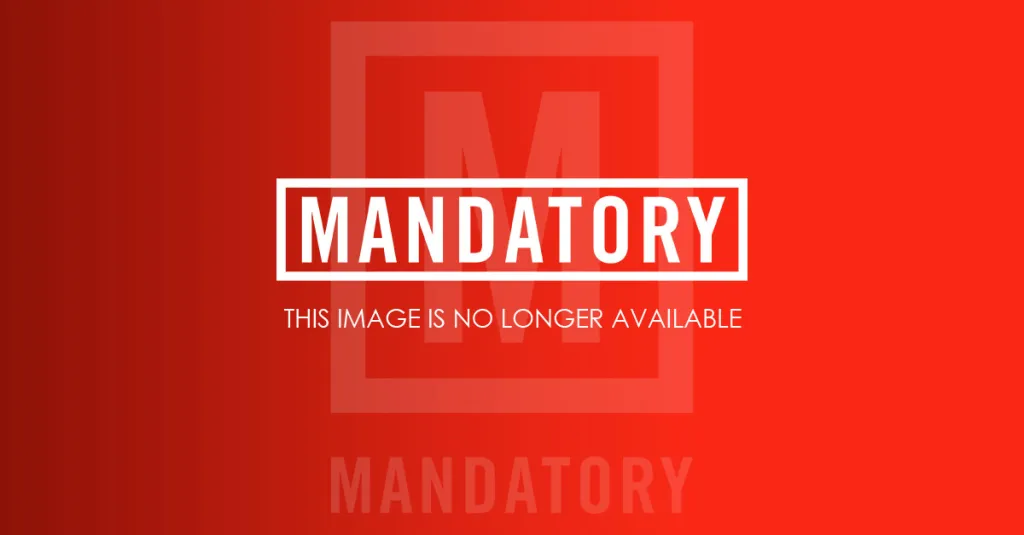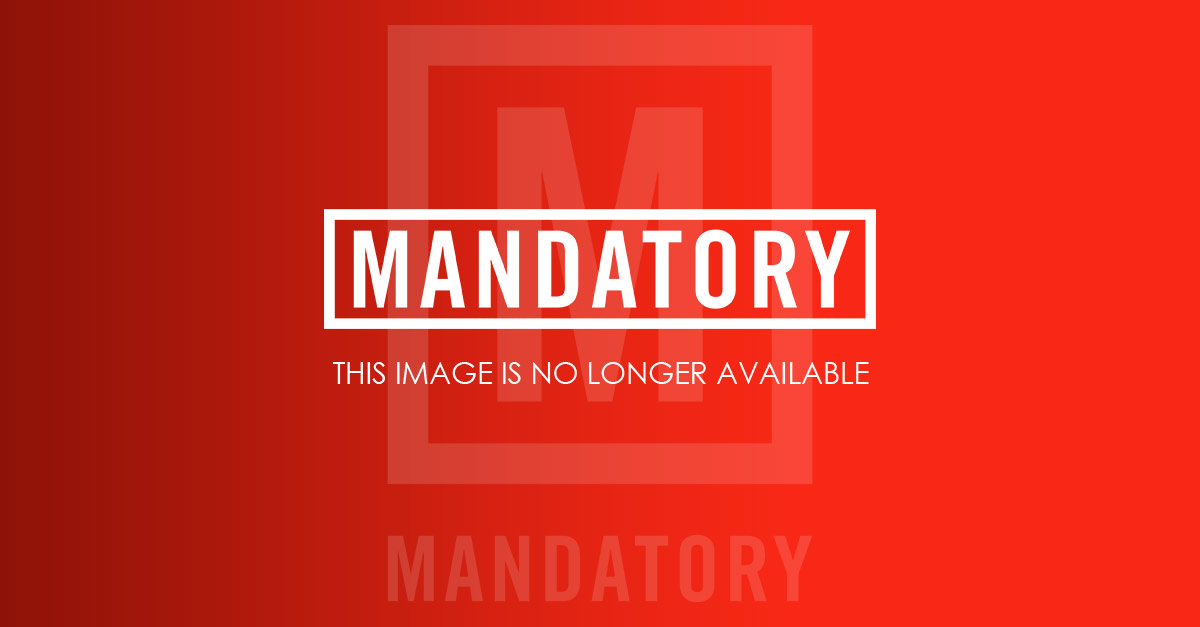Artwork: from Fiorucci (Rizzoli New York).
Let’s face it: the 1980s changed the game. It is the bridge between the past and the present, when analogue culture finally gave way. It is the dawn of a new era, one that combined the independent spirit of Do It Yourself with the burgeoning brandalism that has come to define the way we live today.
Also: The 5 Best New Books for Holiday Style
Consider the cult appeal of Black Mirror’s “San Junipero” episode: a reminder that for many, the youth culture of the 80s continues to leave its mark on music, fashion, art, and nightlife. Crave rounds up the best new books celebrating this legends of the decade whose original take on life and style looks even better in retrospect.

No. 45, January 1984. © Nick Logan/The Face Archive
The Story of The Face
The Face was the style bible for everyone in the know, everyone who wanted a respite from the mainstream and to stay well ahead of the curve. Launched in 1980 by Nick Logan, the British magazine set its own course, being the first publication to fuse the worlds of fashion, photography, music, design, nightlife, film, politics, and journalism in the service of youth culture.
Add to this was the iconic look of its contributors, including stylist Ray Petri who created the “Buffalo” look that had Neneh Cherry singing its praises and art director Neville Brody, whose aesthetic helped shape the look of the times, Whether showcasing the works of Crave faves Juergen Teller, Nick Knight, Robert Mapplethorpe or Cindy Sherman, The Face defined the times.
Now, The Story of The Face: The Magazine That Changed Culture (Thames & Hudson) by Paul Gorman takes us back to the era when the glossies were king, showing how the magazine became a catalyst for creativity, innovation, and original ideas during its heyday. Invariably, the most interesting part is how it speaks to us today, addressing many of the very issues we are dealing with decades later.

Fiorucci (Rizzoli New York).
Fiorucci
2017 marks the 50th anniversary of Fiorucci, and in turn, the famed Milanese fashion label is celebrating its rebirth with the relaunch at London Fashion Week, a new chain of retails stores, and the publication of Fiorucci (Rizzoli New York), the ultimate visual history that looks back at the brand’s most iconic pop culture moments.
Whether bringing the thong from the shores of South America to Madison Avenue, making t-shirts paired with jeans a high fashion look, or collaborating with artists like Jean-Michel Basquiat and Keith Haring, Fiorucci made fashio go pop, appealing to the spirit of youth culture that embraced a sophisticated mix of sexy, sultry, and stylish looks.
Fiorucci effortlessly blended the space between innocence and knowing, giving its customers the space to grow, to explore and examine their sensibilities, and to have fun with it all. It perfectly embodied the ethos of the 80s while speaking to the world today, with Gigi Hadid and Kendall Jenner wearing Fiorucci t-shirts, and Georgia May Jagger tapped to be the face of the new campaign. It simply doesn’t get any better than this.

Vincent Gallo, copyright Rhonda Paster Corte.
The Mudd Club
The Mudd Club was the ultimate spot for those in the know at a time when New York was reinventing itself. Post Punk, No Wave, Hip Hop, and Graffiti artists rubbed shoulders in this den of sin, where everyone from Halston, Jean-Michel Basquiat, and David Bowie to Nan Goldin, Lydia Lunch, and Dee Dee Ramone could be found in the mix.
From 1979 to 1983, the Mudd was the place to be—and now Richard Boch, the doorman, tells the inside history in the fabulous new book, The Mudd Club (Feral House). With Boch as our guide, we get the inside scoop on the wild scene inside this tiny club.
This is the kind of book you simply can’t put down, as you read page after page of juicy little stories that end with lines like, “At 4 a.m. the party was still going strong. I picked up my brandy and swallowed the Qaalude. Gennaro oozed by, high on sweet potato pie. He still had the nickel in his ear.”

BONG9 / Depeche Mode / “It’s Called A Heart” / 1985. Photographic montage from the music video shoot by Peter Care, filmed on location in Berkshire. Courtesy Mute Artists Limited
Mute: A Visual Document
Back in the late 70s, as punk began to evolve, a new sound came forth, one that made melodious songs out electronic noise. At the center of this movement was a record label called Mute, which started when founder Daniel Miller decided to do it himself. He recorded two tracks at home under the name The Normal, and distributed them himself. Within a couple of months, “T.V.O.D./Warm Leatherette” sold 15,000 copies.
From these humble beginnings, Mute came into its own, pioneering post-punk electronic music with musicians including Depeche Mode, Nick Cave, Yazoo, New Order, and Fad Gadget, among many others. But Mute didn’t just change the sound of music – they also reinvented how it was seen in collaborations with photographers and designers including Anton Corbijn, Brian Griffin, and Peter Saville.
To celebrate the incredible legacy, Thames & Hudson has just released Mute: A Visual Document, a beautifully produced catalogue of the label’s history and fines work. Taken in book form, it’s easy to see the ways in which photography and design played a pivotal role in shaping the sound of the times and creating an 80s aesthetic all its own, one that sounds equally iconoclastic today as it did when it first came into the world.

Fred Brathwaite, aka Fab 5 Freddy (American, born 1959). FIVE. 1980–81. Spray enamel and marker on steel. Courtesy the artist and Patrick Fox.
Club 57: Film, Performance, and Art in the East Village, 1978–1983
From 1978 to 1983, Club 57 was the perfect counter-point to the Mudd Club. Located in the basement of a Polish Church at 57 St. Marks Place, was conceived as a space for 1960s style “happenings” run by a curatorial staff that included film programmers Susan Hannaford and Tom Scully, exhibition organizer Keith Haring, and performance curator Ann Magnuson.
As a no-budget venue with virtually no space between the performers and the audience, it became a laboratory for new modes of art, performance, fashion, music, and exhibition that helped push the downtown art world from Soho to the East Village during the 1980s.
Now, in celebration of the little club that could, the Museum of Modern Art has created the stellar catalogue Club 57: Film, Performance, and Art in the East Village, 1978–1983 to accompany the exhibition of the same name now on view through April 1, 2018. The book is a phenomenal achievement in publishing, equal parts art and cultural history that features Crave faves Edo Bertoglio, James Nares, Glenn O’Brien, David Bowie, and David Wojnarowicz, among a host of 80s legends.
Miss Rosen is a journalist covering art, photography, culture, and books. Her byline has appeared in L’Uomo Vogue, Vogue Online, The Undefeated, Dazed Digital, Aperture Online, and Feature Shoot. Follow her on Twitter @Miss_Rosen.
The 5 Best New Books About the 1980s
-
The 5 Best New Books About the 1980s

From Fiorucci (Rizzoli New York).
-
The 5 Best New Books About the 1980s

From Fiorucci (Rizzoli New York).
-
The 5 Best New Books About the 1980s

From Fiorucci (Rizzoli New York).
-
The 5 Best New Books About the 1980s

From Fiorucci (Rizzoli New York).
-
The 5 Best New Books About the 1980s

From Fiorucci (Rizzoli New York).
-
The 5 Best New Books About the 1980s

From Fiorucci (Rizzoli New York).
-
The 5 Best New Books About the 1980s

From Fiorucci (Rizzoli New York).
-
The 5 Best New Books About the 1980s

No. 45, January 1984. © Nick Logan/The Face Archive.
From The Story of The Face (Thames & Hudson).
-
The 5 Best New Books About the 1980s

“The Work Ethic,” no 23. © Nick Logan/The Face Archive. From The Story of The Face (Thames & Hudson).
-
The 5 Best New Books About the 1980s

“The Cult with No Name,” no 7, November 1980. © Nick Logan/The Face Archive.
From The Story of The Face (Thames & Hudson).
-
The 5 Best New Books About the 1980s

“The Daisy Age” in the special issue, “The 3rd Summer of Love” vol.2 no.22, July 1990. © Nick Logan/The Face Archive.
From The Story of The Face (Thames & Hudson).
-
The 5 Best New Books About the 1980s

The Story of The Face (Thames & Hudson.
-
The 5 Best New Books About the 1980s

Photo copyright Pheobe Zeeman.
From The Mudd Club (Feral House).
-
The 5 Best New Books About the 1980s

Richard Boch and ChiChi Valenti share a tender moment during Soul Night at the Mudd Club.
From The Mudd Club (Feral House).
-
The 5 Best New Books About the 1980s

Tina Lhotsky the morning after. Photo copyright Alan Kleinberg.
From The Mudd Club (Feral House).
-
The 5 Best New Books About the 1980s

Debia Mazar, photo copyright Rhonda Paster Corte.
From The Mudd Club (Feral House).
-
The 5 Best New Books About the 1980s

Vincent Gallo, photo copyright Rhonda Paster Corte.
From The Mudd Club (Feral House).
-
The 5 Best New Books About the 1980s

Richard Boch bathroom portrait, photo copyright Marcias Resnick.
From The Mudd Club (Feral House).
-
The 5 Best New Books About the 1980s

The Mudd Club (Feral House)
-
The 5 Best New Books About the 1980s

Fad Gadget / Frank Tovey / Promo Photo 1981. “He was probably the greatest example of someone having a completely different on-stage persona. He was a very quiet, gentle,
funny guy but on stage he could become extremely confrontational.” Courtesy Mute Artists Limited. Photo by Phoebe Markham.From Mute: A Visual Document (Thames & Hudson).
-
The 5 Best New Books About the 1980s

MUTEL1 / Depeche Mode / The Singles 81-85 / Artwork boards /
Posters / Proofs / 1985. “In the short space of four years—between 1981 and 1985—Depeche
Mode made four albums and were also touring heavily as well;
nowadays it takes four years to make one album. This was the first Mute compilation, and is the only time that Depeche Mode have ever
posed specifically for an album cover shot. On the inner sleeve we
printed press quotes, including some of the most hostile reviews
they’d received. That was fun.” The catalogue number was MUTEL—a
tongue-in- cheek nod to the KTEL compilations of the time. Courtesy Venusnote Limited.From Mute: A Visual Document (Thames & Hudson).
-
The 5 Best New Books About the 1980s

MUTE032 / Nick Cave / “In The Ghetto” / Artwork Boards / 1984. The three layers of the original board artwork for Nick Cave’s first
single. The track is a surprising cover of “In The Ghetto,” a ballet made famous in the 1960s by Elvis Presley. The band briefly performed as Nick Cave And The Cave Men before switching to The Bad Seeds—a name taken from the final Birthday Party release. Although issued on the same day as Cave’s debut, From Her To Eternity, the single did not appear on the original album. Courtesy BMG Rights Management (UK) Ltd.From Mute: A Visual Document (Thames & Hudson).
-
The 5 Best New Books About the 1980s

BONG6 / Depeche Mode / Master And Servant / Art Boards / Cover
Proof / 1984. The first single from Depeche Mode’s 1984 album Some Great Reward saw the band moving rapidly away from their electronic pop roots. “At this time Martyn Atkins was creating a strong, consistent graphic look for Depeche’s developing sound. There’s the new logo…the blocks of color…it still looks very powerful now.” Courtesy Venusnote Limited.
From Mute: A Visual Document (Thames & Hudson).
-
The 5 Best New Books About the 1980s

STUMM7 / Yazoo / Upstairs At Eric’s / Test Polaroids / 1982
Yazoo names their debut album after producer Eric Radcliffe’s
Blackwing Studios, which was directly above Vince Clarke’s personal studio space. “The polaroids were taken by Joe Lyons at the photoshoot for the album, but were never used; the image used on the cover of Upstairs… came about by accident, apparently.” Courtesy BMG Rights Management (UK) Ltd. Photos by Joe Lyons.From Mute: A Visual Document (Thames & Hudson).
-
The 5 Best New Books About the 1980s

BONG9 / Depeche Mode / “It’s Called A Heart” / 1985. Photographic montage from the music video shoot by Peter Care, filmed on location in Berkshire. Courtesy Mute Artists Limited.
From Mute: A Visual Document(Thames & Hudson).
-
The 5 Best New Books About the 1980s

Mute: A Visual Document(Thames & Hudson).
-
The 5 Best New Books About the 1980s

-
The 5 Best New Books About the 1980s

Jennifer T. Ley (American, born 1953). She Doesn’t Cry Over Faded Bouquets Anymore, 1979. Pastel and pencil on color Xerox. The Museum of Modern Art, New York. Department of Film Special Collections.
From Club 57: Film, Performance, and Art in the East Village, 1978–1983 (Museum of Modern Art).
-
The 5 Best New Books About the 1980s

Fred Brathwaite, aka Fab 5 Freddy (American, born 1959). FIVE. 1980–81. Spray enamel and marker on steel. Courtesy the artist and Patrick Fox.
From Club 57: Film, Performance, and Art in the East Village, 1978–1983 (Museum of Modern Art).
-
The 5 Best New Books About the 1980s

Flyer for Color Xerox Show at Club 57, 1982. Design by Jean Caffeine. The Museum of Modern Art, New York. Department of Film Special Collections.
From Club 57: Film, Performance, and Art in the East Village, 1978–1983 (Museum of Modern Art).
-
The 5 Best New Books About the 1980s

Club 57 calendar, July 1980. Design by Ann Magnuson. © Ann Magnuson.
From Club 57: Film, Performance, and Art in the East Village, 1978–1983 (Museum of Modern Art).
-
The 5 Best New Books About the 1980s

Flyer for a performance by Tom Murrin and Richard Bone at Club 57, 1982. Design by Murrin. The Museum of Modern Art, New York. Department of Film Special Collections.
From Club 57: Film, Performance, and Art in the East Village, 1978–1983 (Museum of Modern Art).
-
The 5 Best New Books About the 1980s

Club 57: Film, Performance, and Art in the East Village, 1978–1983 (Museum of Modern Art).





